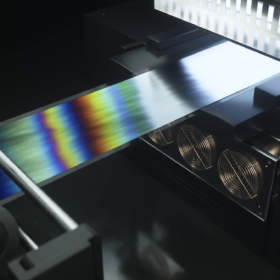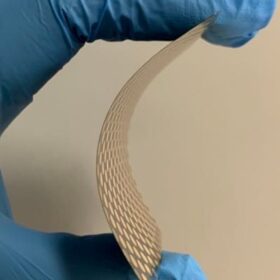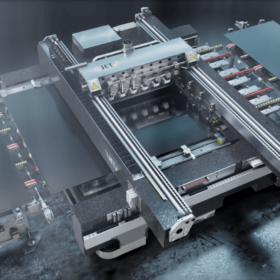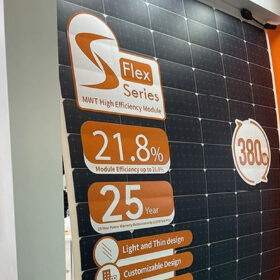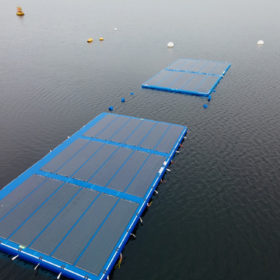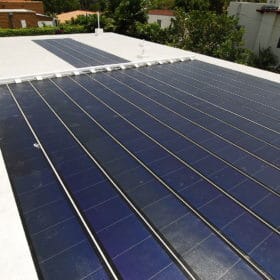Researchers build all-perovskite tandem solar cell with 28.2% efficiency
An international research team has built an all-perovskite tandem solar cell based on a wide-bandgap top perovskite cell with a 20.5% efficiency. The 1-cm2 scale tandem device achieved the highest efficiency ever reported to date for all-perovskite solar cells of this size.
Danish print finishing equipment provider offers turnkey pilot lines for perovskite, organic solar cells
Denmark-based Grafisk Maskinfabrik (GM) is now selling roll-to-roll turnkey pilot production lines featuring slot-die coating, available through its GM Functionals unit.
New diode equation can improve solar thin-film efficiency, researchers claim
Scientists in the United Kingdom and Finland publish a new model for analyzing thin-film and other PV devices with low charge-carrier mobilities. It’s claimed the unified diode equation for thin-film PV provides insights into the mechanisms driving limiting charge collection and power-conversion efficiency in low-mobility PV devices.
Perovskite thin film: Out with the old, in with the new
Silicon-perovskite tandem solar requires optimization of both approaches, and embodies the weaknesses of each. Meanwhile, the use of pure thin-film devices offers a cheaper, simpler, and more sustainable PV solution for the United States.
Cadmium telluride solar cell based on indium gallium oxide emitter achieves 17.2%
Developed by the University of Toledo, the cell achived the highest efficiency ever reported for flexible cadmium telluride solar cells to date. The device reached an open-circuit voltage of 861 mV, a short-circuit density of 27.8 mA/cm2, and a fill factor of 71.7%.
4JET unveils laser system for P1, P2, P3 scribing of perovskte, CdTe, CIGS solar modules
German equipment supplier 4JET has launched a new thin film system designed for P1, P2 and P3 laser scribing of perovskite, cadmium telluride (CdTe), and copper indium gallium selenide (CIGS) solar technologies.
Weekend Read: Flex generation
A new generation of flexible, lightweight modules is entering the market. With back contact technology offering its own form of design flexibility and robustness, the new products could crack a hard-to-address market segment.
Dutch developer secures funds for flexible floating solar pilot in North Sea
Bluewater Energy Services has won a grant from the Dutch government to build a flexible floating solar demonstration project in the North Sea. The system uses flexible thin-film PV modules and flexible floaters that move with the waves.
Applying perovskite solar cells onto BIPV steel products
Swansea University will collaborate with Indian multinational Tata Steel to investigate perovskite solar cell materials that could be applied directly onto coated steel to make building-integrated PV components. The partnership will add to an “active buildings” project that the Welsh university has been running for several years.
Thin film solar may have carbon intensity advantage over silicon
Thin-film cadmium telluride panels may have a $0.02 to $0.04 per watt carbon cost advantage over traditional polysilicon, said the National Renewable Energy Laboratory in an analysis of embodied carbon, embodied energy, and energy payback.



